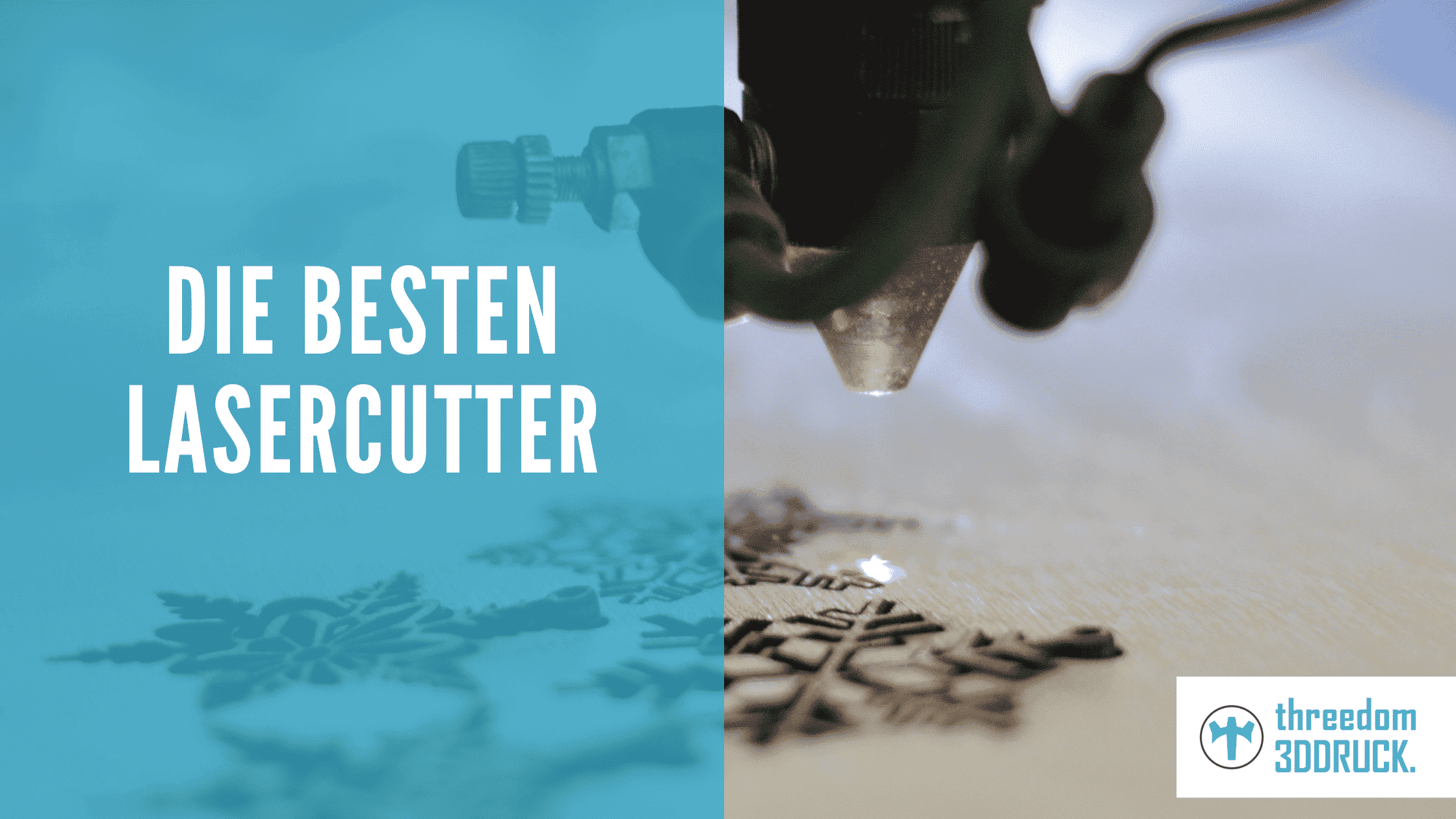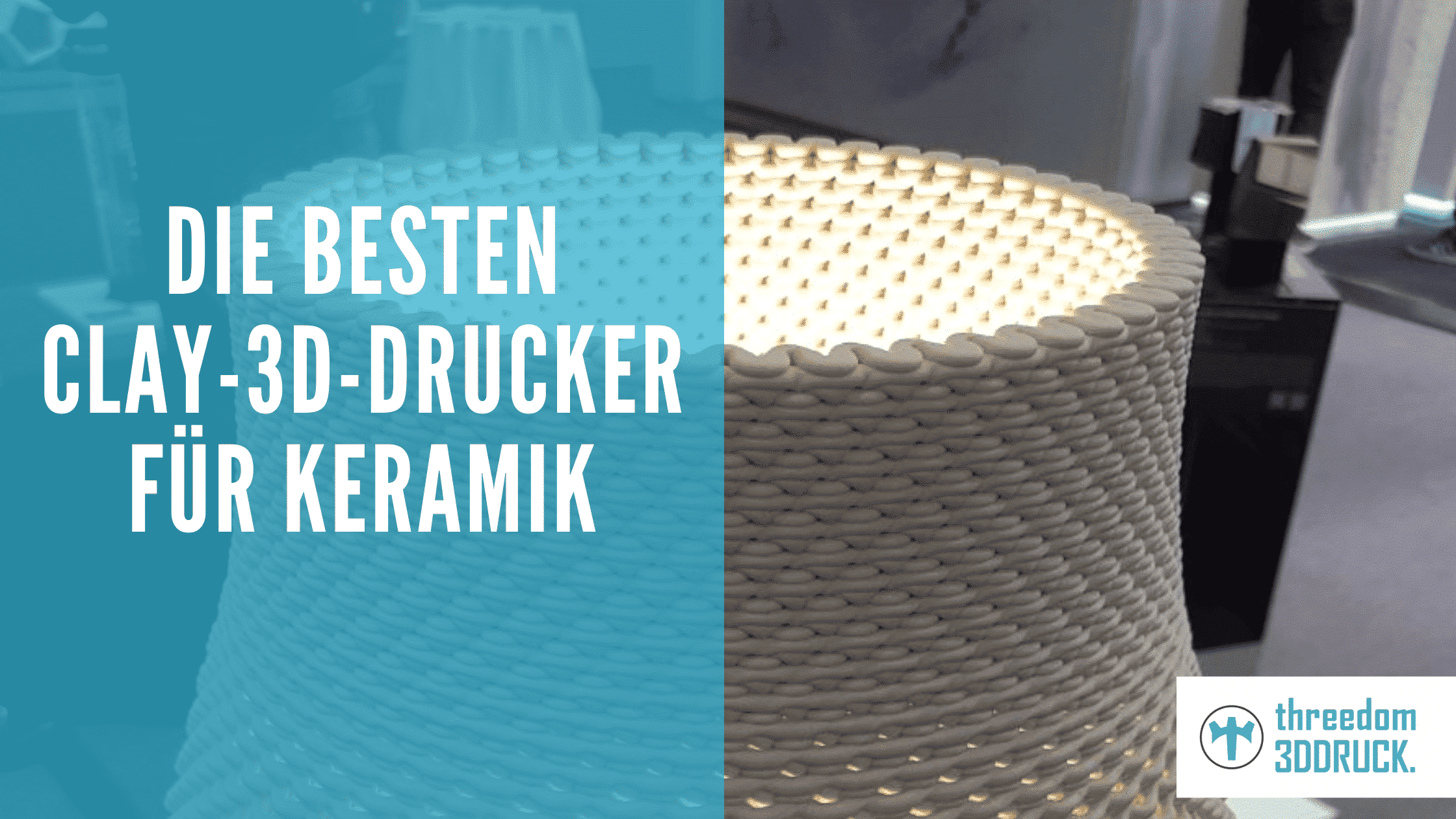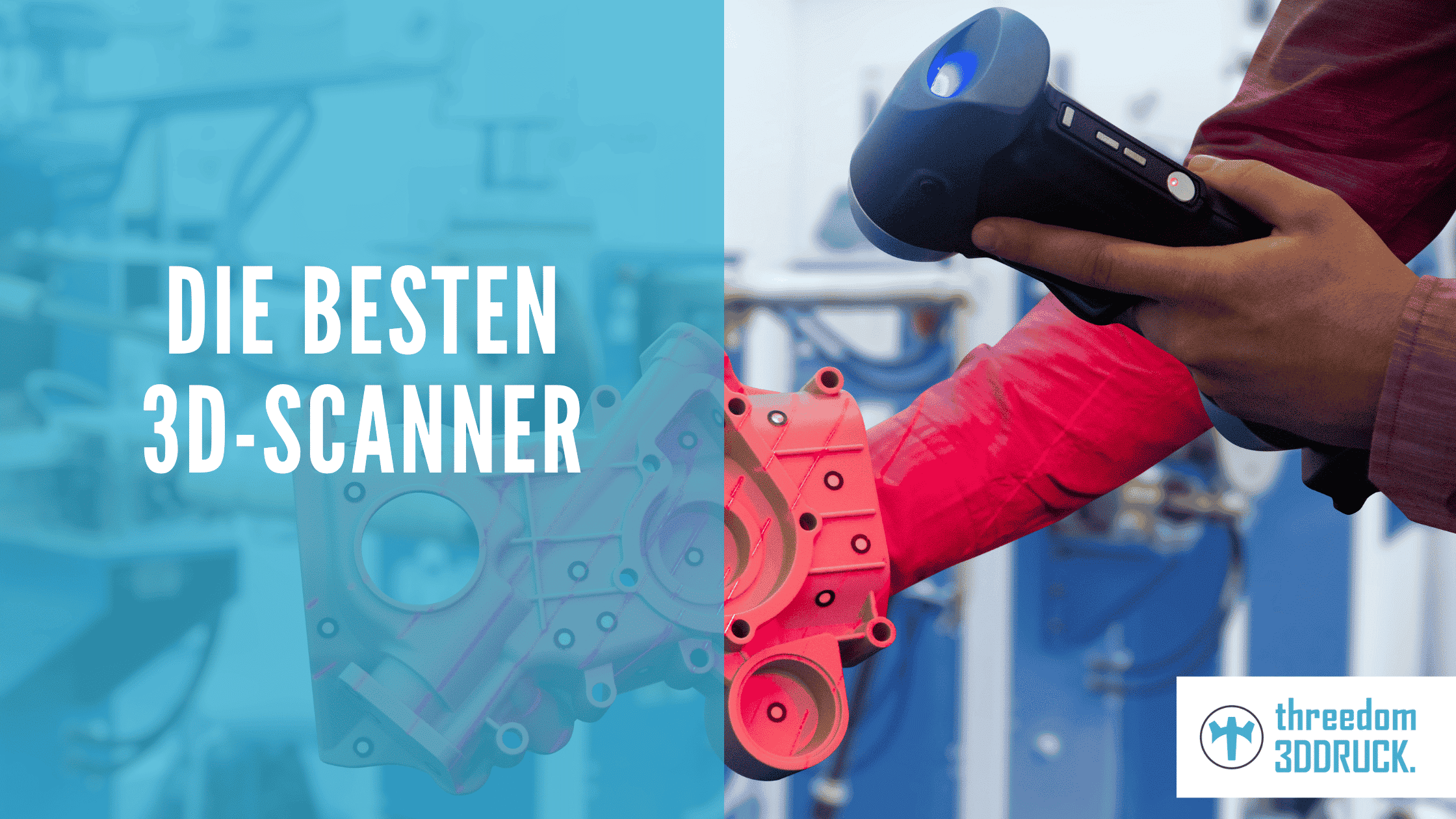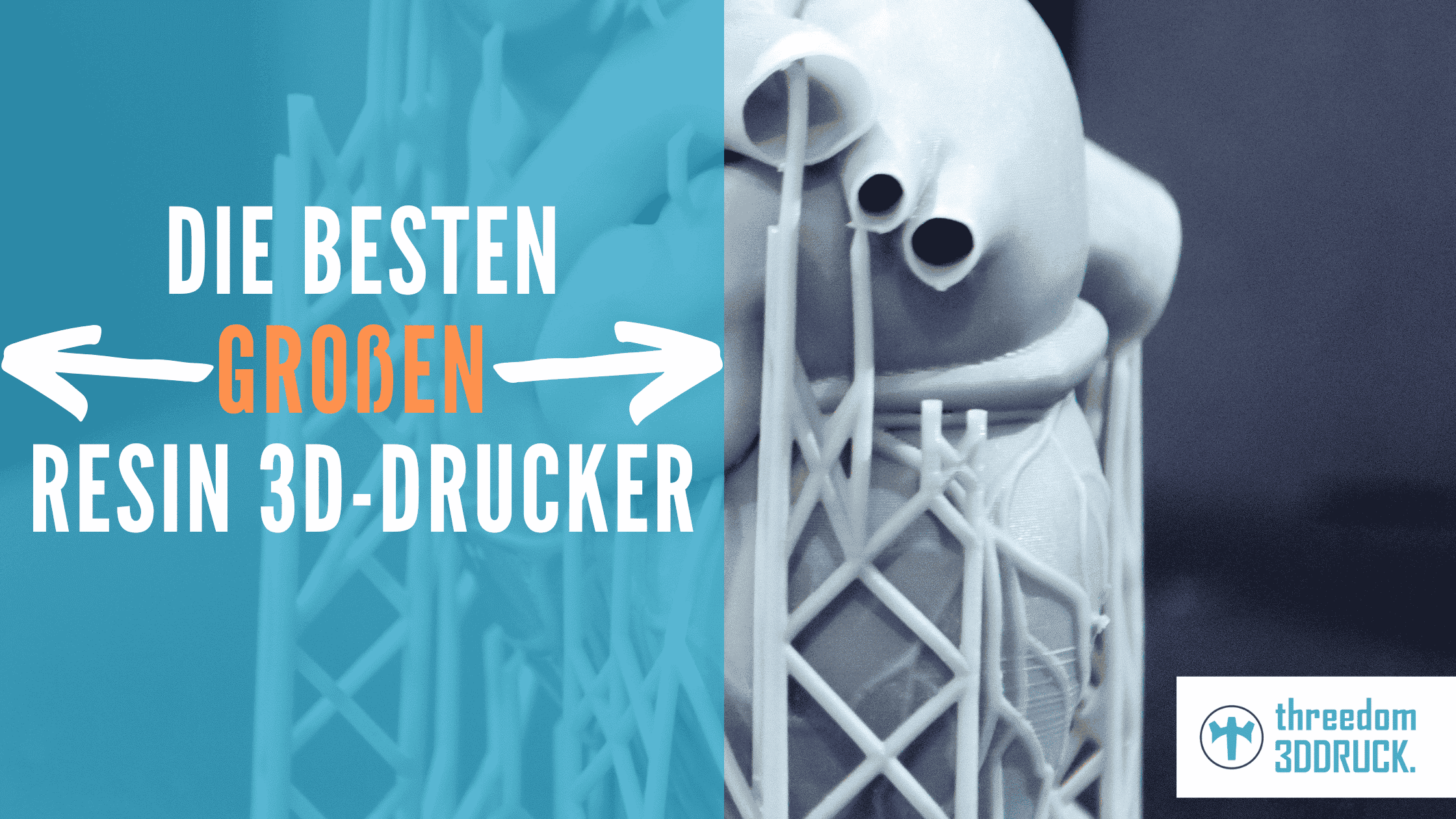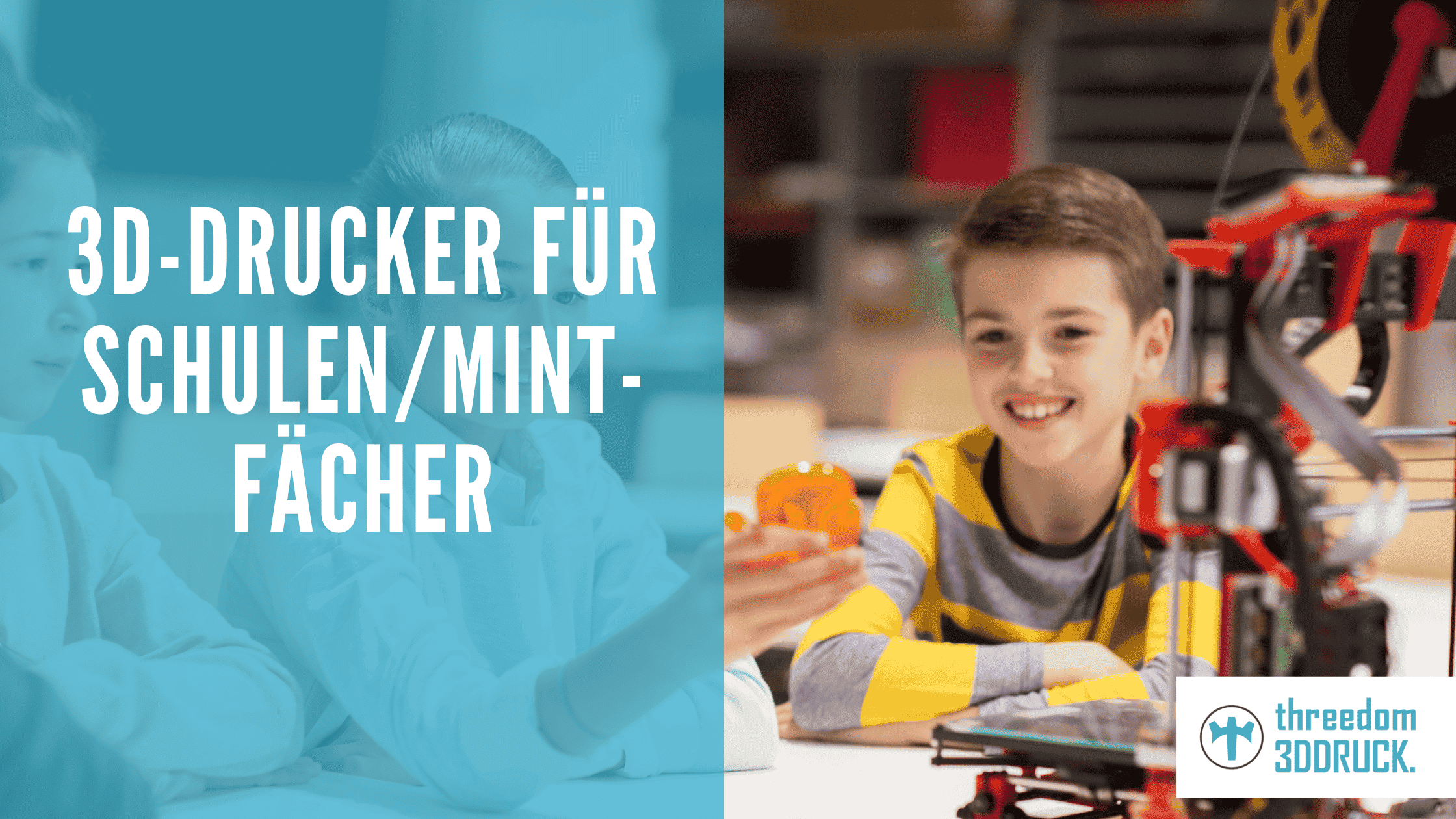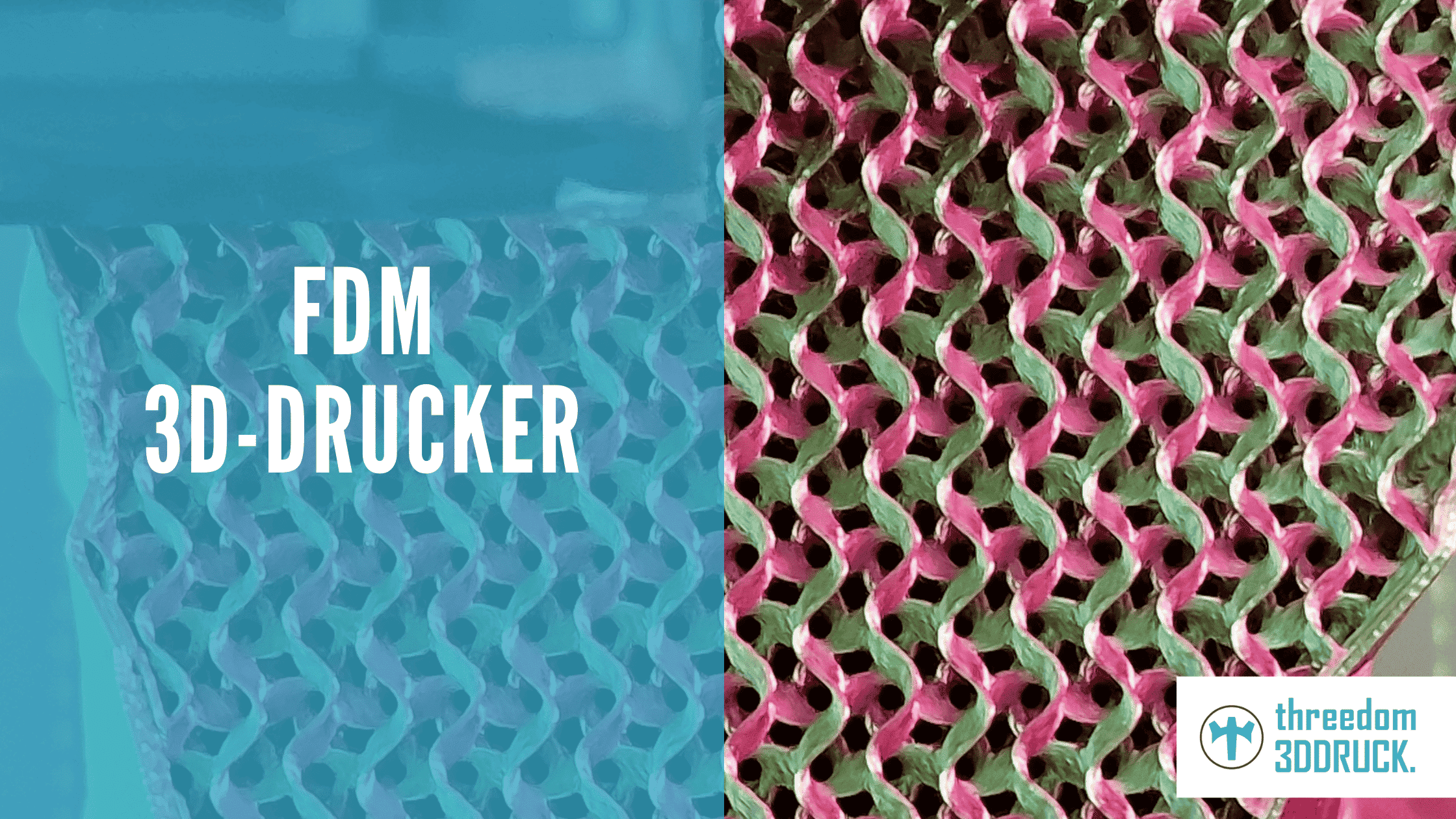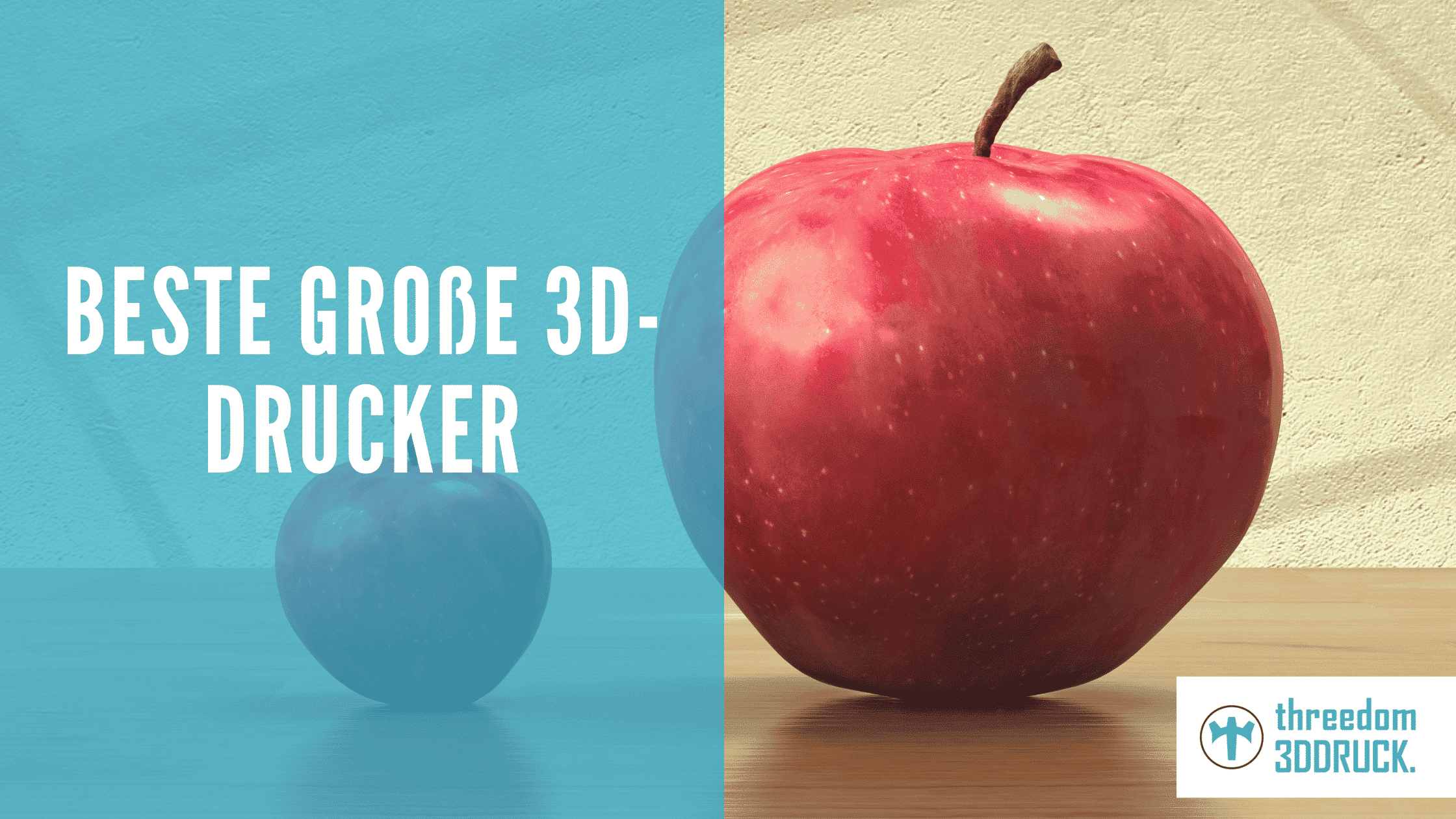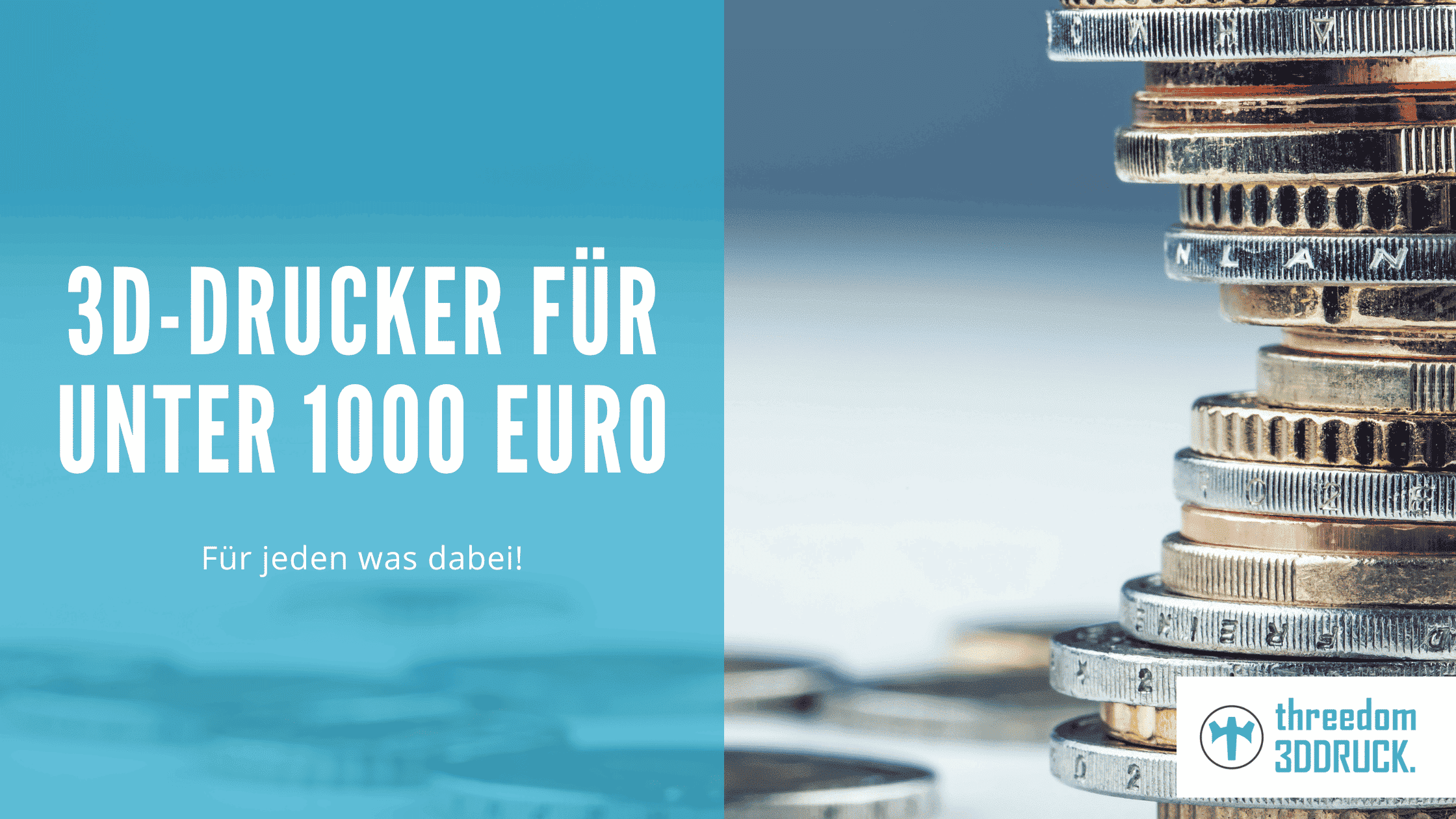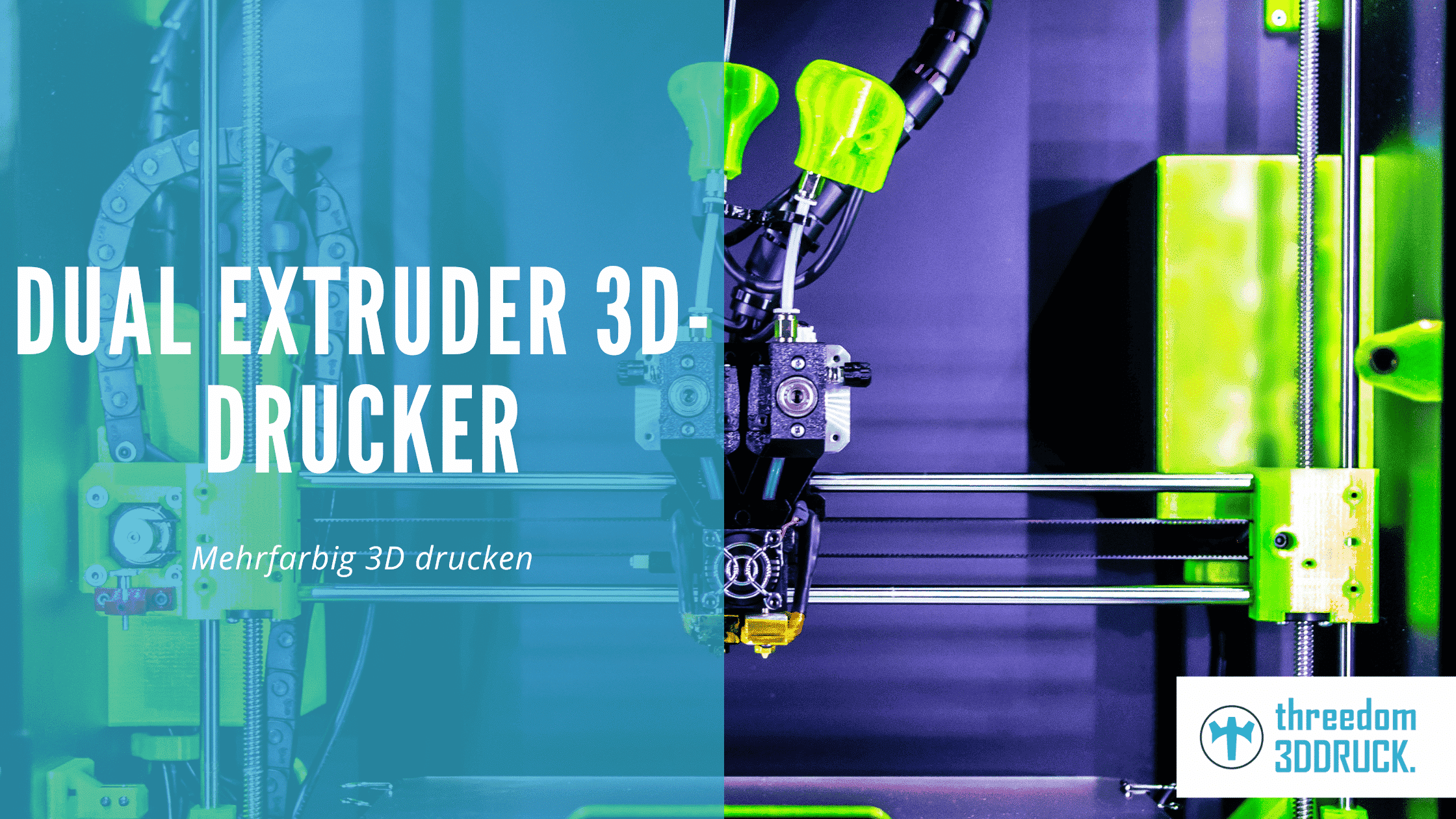The Best Large Resin 3D Printers 2024
Resin 3D printers have long been the preserve of industry. However, technology has evolved mightily and so these printers no longer necessarily require the investment of a small fortune. We went on a search for the best large resin 3D printers and found what we were looking for. Find out which models you should definitely take a look at and what you need to know about the large impression printers below.
The most important in a nutshell
- Resin 3D printers are popular mainly because of their detailed prints
- During the printing process, resin is cured by a light source in a resin printer
- A distinction is made between SLA printers, DLP printers and LCD printers that work with a UV laser or a DLP projector
- When selecting the right 3D resin printer, you should pay attention to various criteria in addition to the printing process used
- The best tips for buying a large impression printer and the current best models are shown in our guide.
Best Resin/Resin 3D Printers with Large Build Space
In our list, we have clearly listed the best large 3D printers with resin for you. All important facts can be found in the table.
| Place | Name | Manufacturer | Installation space | Resolution (micrometer) | Special features | Approx. price | To the shop* |
| 1 | Form 3L Basic Wholesale Package | FormLabs | 200 x 335 x 300 | / | Component production simultaneously by two lasers, modern LFS process, easy and fast material change, remote print for printing from any location | 14.300 € | Click |
| 2 | Sonic Mega 8K | Phrozen | 330 x 185 x 400 | 10-200 | Factory leveled build plate, short layer curing time, LCD 8K resolution. | 2.399 € | Click |
| 3 | Photon M3 Max | Anycubic | 298 x 164 x 300 | / | Large installation space and large resin tank, air purification, high pressure accuracy | 999 € | Click |
| 4 | Saturn 2 | Elegoo | 219 x 123 250 | 10-150 | Matrix light source, integrated air purifier, 8K monochrome LCD display. | 599 € | Click |
| 5 | Jupiter | Elegoo | 278 x 156 x 300 | / | Air purifier with activated carbon, resin supply is automatic, stable all-metal design, 6K LCD display. | 1.299 € | Click |
| 6 | Photon M3 Premium | Anycubic | 219 x 123 x 250 | / | 8K resolution, improved light source system, 10-inch LCD display, air purification, large resin tank. | 699 € | Click |
| 7 | Sonic Mighty 8K | Phrozen | 218 x 123 x 235 | / | Camera with time-lapse function integrated, dual linear rails, 10-inch mono LCD screen | 789 € | Click |
The Best Large Resin 3D Printer: Mold 3L Basic Wholesale Package
FormLabs offers an optimal high-end solution with its Form 3L Basic Wholesale Package. As the name suggests, this package is packed with some exciting things. Buyers can optionally use the Pro Service Plan and, among other things, go through an individual training with a trainer. The printer itself offers enormous precision and detail through a modern LFS process as a further development of the SLA process. In addition, you print with two lasers, which increases the printing speed enormously. In addition, thanks to Remote Print, you can start print jobs from anywhere and rely on fast material changes.
General info:
- Name: Form 3L Basic Wholesale Package
- Manufacturer: FormLabs
- Installation space (L x W x H in mm): 200 x 335 x 300
- Maximum print resolution (microns): /
- Special features: Component production simultaneously by two lasers, modern LFS process, easy and fast material change, remote print for printing from any location.
- Advantages: High print speed, non-stop printing thanks to continuous print monitoring, Pro Service Plan optional.
- Disadvantages: Only suitable for professionals, high price
The best large resin 3D printer for home and budget enthusiasts: Anycubic Photon M3 Max
Anycubic offers its Photon M3 Max, an affordable version for all fans of resin printers. The device is priced below the €1,000 mark and is thus ideal for all budget-conscious users. The performance does not fall by the wayside here and Anycubic has adjusted a few things compared to the predecessor. For example, the size of the resin tank has been increased by around 60% and thus optimally covers the needs of large prints. In addition, the printer has a large installation space and integrated air purification. It is safe to use in your own home. The light source has also been adapted compared to the predecessor, and a new FEP film has also been used. The result is high pressure accuracy, which should always be sufficient for home use.
General info:
- Name: Photon M3 Max
- Manufacturer: Anycubic
- Installation space (L x W x H in mm): 298 x 164 x 300
- Maximum print resolution (microns): /
- Special features: Large installation space and large resin tank, air cleaning, high pressure accuracy.
- Advantages: Improved light source, large well covers resin needs, improved FEP film compared to predecessor.
- Disadvantages: Cleaning not always unproblematic, WLAN and cloud connectivity not yet available
Best Large Residual Printer for Semi-Professionals: Phrozen Sonic Mega 8K
Near-impeccable performance is promised by the Phrozen Sonic Mega 8K printer. This sets new standards in two respects at once and can convince with a fast print speed and high precision of 43 micros at the same time. The curing time per layer is only around one to two seconds. You can also look forward to a high-resolution LCD display, which is supposed to be particularly durable according to the manufacturer. Durable is definitely the stable construction of the printer. This provides a secure hold even for large and heavy models. At the same time, the building panel is already leveled at the factory. There is no need to calibrate the printer yourself, so you can start printing immediately. A clear plus for both newcomers and advanced print fans.
General info:
- Name: Sonic Mega 8K
- Manufacturer: PhrozenInstallation space (L x W x H in mm): 330 x 185 x 400
- Maximum print resolution (microns): 200
- Special features: Factory leveled build plate, short layer curing time, LCD 8K resolution.
- Advantages: High precision (43 micros), 15-inch LCD display, large footprint, high stability even with heavy and large models.
- Disadvantages: Removal of prints sometimes cumbersome, quite high price
Criteria for the choice of large resin printers
When choosing a great resin printer, you should consider different decision criteria. Obviously, the print volume plays a big role, as does the resolution. However, you should also pay attention to the stability and the printing process used, among other things. In the following, we will show you which criteria should be checked before buying the devices.
Print volume
Of course, if you're looking for a great resin 3D printer, you'll do so with the build volume of the printer in mind. How high this should be depends individually on your wishes and planned projects. As a rule, you can easily create, for example, slightly larger decorative pieces with a construction volume of 300 x 150 x 300 mm. If you are still undecided, you should always go for a printer with a slightly larger build volume if in doubt. Even if you start small, you'll be ready for the next steps and won't have to invest again soon.
Resolution
Another important factor is the resolution. This refers to the resolution of the LCD display used in the DLP printers and the accuracy of the laser in the SLA devices. In general, we recommend that you give RGB LCDs a wide berth. The technology is now outdated, so you should be on the lookout for a resin 3D printer with a monochrome LCD display first and foremost. It is interesting to know: The fewer pixels the display has, the less detail your printer can produce. So it's best to look for a 4K printer or higher. Of course, depending on your budget, you can also go for an 8K device and potentially get the finest resolution.
Stability and reliability of the printer
You should always keep in mind that large objects also exert great forces on your printer. It is therefore important to ensure that the structure is as stable as possible. This is the only way to ensure that the components can do their work in peace and allow you to achieve high quality printing. Devices with a metal structure are especially recommended, as they usually still do their job reliably even after numerous printing processes.
Printing method used
There are differences between the individual printing processes of the resin printers. If it is an SLA printer, the resin or resin is cured with the help of a UV laser. A DLP printer, on the other hand, uses a so-called DLP projector. This projects the respective layer to be printed onto a pixel screen. The LCD process is similar. However, this uses a series of UV LEDs that expose a layer over a masked LCD screen.
In the meantime, there are also somewhat more advanced printing processes, such as the LFS process from FormLabs. This is also known as low-force stereolithography and, as a further development of the SLA process, is intended to significantly reduce the pull-off forces during printing. FormLabs also promises that thanks to a new light unit, parts can be consistently produced with precision.
Print speed
There are also differences in the printing speed of the individual devices. Here you should again pay attention to your personal requirements. If the printer is used daily for badges, a higher speed is of course somewhat more important than for infrequent printing. As a rule of thumb, a large resin 3D printer should be able to accomplish at least 60 mm per hour. For beginners, this speed is usually quite sufficient. However, some devices, such as Phrozen's Sonic Mega 8K, also offer a slightly higher speed. In this case, up to 70 mm per hour. However, it is important to note that in many cases the specified speeds are only achieved in rare cases and then often at the expense of precision.
Price/Performance
Of course, one's budget is a factor that should not be ignored when choosing the best resin 3D printer. In general, your goal should be to get the best performance for your particular budget. As a rule, inexpensive solutions of less than 1,000€ can already be found on the market for hobby users. If you want to approach the matter a bit more professionally, you should calculate with a budget starting at 1,000€. As is well known, there are hardly any limits towards the top. If you want an absolute high-end device with many features and a large build volume, you can invest 10,000€ or more.
Print quality
Just a few years ago, 3D fans always had to choose between a large object or a particularly precise printing process when printing with resin printers. Thanks to advancing technology, this has now changed. Look for printers that offer a resolution of around 50 microns. If the printer is below this, it is even better and associated with even higher quality.
Simplicity of use
Especially newcomers to 3D printing should take a look at the user-friendliness of a printer. This is a point that is quickly forgotten – but is of enormous importance. A distinction can be made here between several sub-items. It is a great advantage, for example, if the pressure plate of the unit is already leveled at the factory. This saves you having to do your own calibration, reducing both manual labor and error-proneness. You should also make sure that the print material is easy to insert and also easy to remove. In order to provide you with optimal printing support, your printer should also offer intuitive menu navigation. The ultimate is when the print menu is also offered in German. In most cases, however, you will have to make do with English.
For whom are large resin printers worthwhile?
Large resin printers have their advantage over FDM printers primarily in the fact that, despite large objects, the quality and precision of the prints do not have to be sacrificed. This makes it easy to print objects for human size and thus produce helmets in your own living room, for example. These printers are also ideal for building cosplay costumes or similar components and decorative objects.
This, of course, makes the use of the large resin printers interesting for companies as well. They can, for example, carry out prototype production within their own group or site, thus retaining full control over the process.
Alternatives to large impression printers
Of course, the first alternative to the large-resolution printers are the so-called FDM printers. This refers to printers that use fusel deposition modeling as a manufacturing process. In this process, the respective plastic is melted in an extruder and applied to a print bed through a hotend as well as a nozzle. The large FDM printers are especially well-suited for those who want to produce particularly large structures. This is possible with the FDM printers. However, these usually cannot provide the level of detail that is possible with a DLP or SLA printer.
Conclusion: Large and accurate
The large resin 3D printers are a good testament to how quickly 3D printing has evolved in recent years. The technology itself was enormously cost-intensive some time ago, but is now also affordable for private individuals and hobby printers. In addition to this, the quality of the printers has increased significantly. With a large resin printer, you can print large objects like cosplay costumes or helmets and count on high quality. For every budget, the market now also offers a suitable solution, so you should be able to find the best large resin 3D printer for you quickly.
Frequently Asked Questions: Large Resin 3D Printers
More buying guides:

